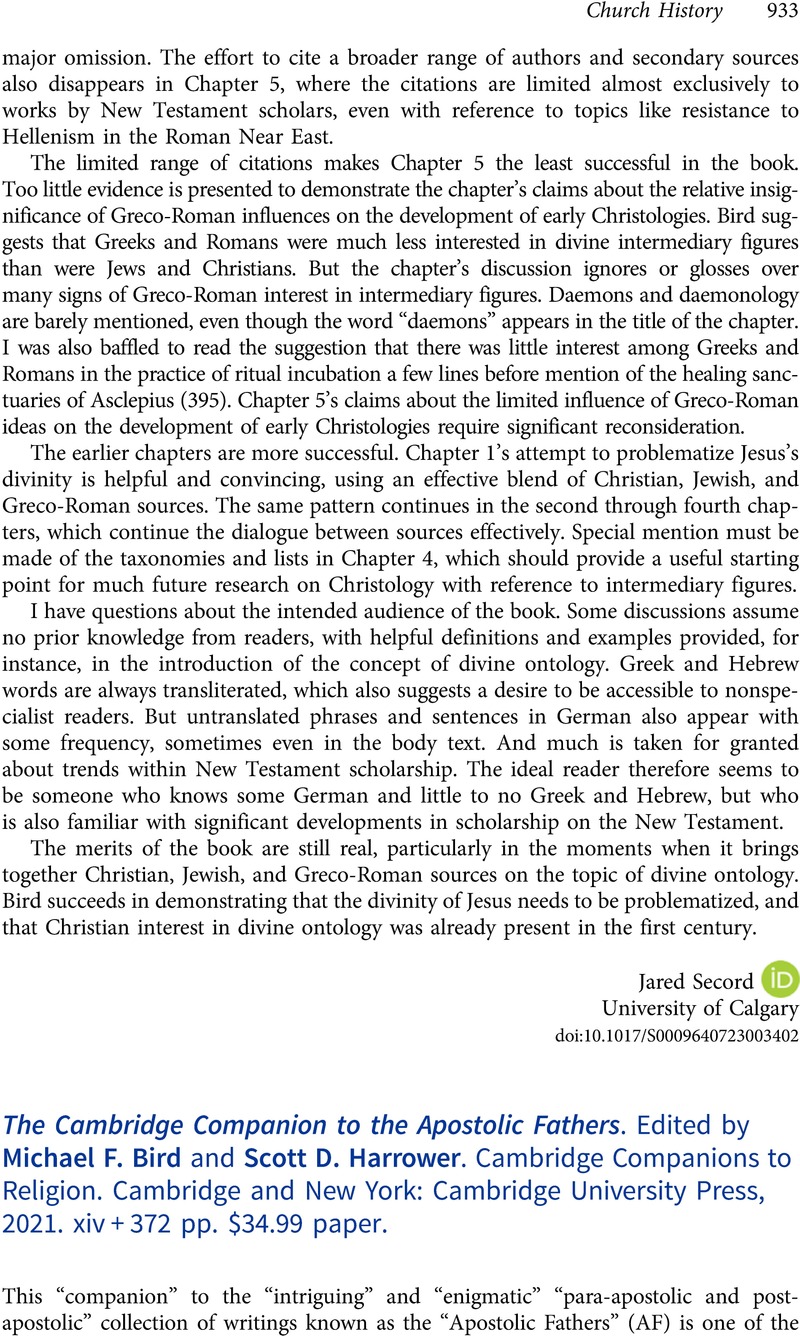No CrossRef data available.
Article contents
The Cambridge Companion to the Apostolic Fathers. Edited by Michael F. Bird and Scott D. Harrower. Cambridge Companions to Religion. Cambridge and New York: Cambridge University Press, 2021. xiv + 372 pp. $34.99 paper.
Review products
The Cambridge Companion to the Apostolic Fathers. Edited by Michael F. Bird and Scott D. Harrower. Cambridge Companions to Religion. Cambridge and New York: Cambridge University Press, 2021. xiv + 372 pp. $34.99 paper.
Published online by Cambridge University Press: 19 March 2024
Abstract
An abstract is not available for this content so a preview has been provided. Please use the Get access link above for information on how to access this content.

- Type
- Book Reviews and Notes
- Information
- Copyright
- Copyright © The Author(s), 2024. Published by Cambridge University Press on behalf of American Society of Church History


